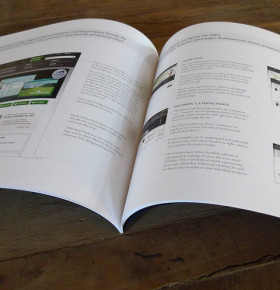
One of the most rewarding aspects of being a researcher is running analyses of event marketing reporting and converting the output into meaningful, actionable results that can be used by non-researchers. This is a challenge in both mathematics and composition. It’s one I enjoy a great deal.
What I especially appreciate about this challenge is that every event marketing report is different. That includes the subject, the methodology, and the end-user. It is crucial to consider to whom this report will be presented. Knowing who will use those results and how they intend to use them is germane to determining the best method of communicating results. It comes down to answering a simple question. Will the client be best served by receiving a report or a presentation?
Report or Presentation?
A report is documentation of the research that preceded it. It does not need to be jargon-filled or statistically focused, but it does need to be detailed. A report, unless otherwise requested, must be pithy and easily understood.
A presentation, on the other hand, is a summary of a report. It is something that can be shared in a short time (think 30 minutes or less), while still getting the main findings and implications across. Not everyone makes a distinction between a report and a presentation. My observation is that the more removed a person is from the research, the more likely he or she may make no distinction between a report and a presentation. That’s not a problem. But presenters cannot afford that luxury.
A report that is also used as a presentation should go light both on numbers and on length. (I have had instances where a client wants every available data point to be presented in a detailed PowerPoint deck so they can incorporate the deck into a presentation they are preparing. Fortunately, this is the exception rather than the rule.)
The client wants results and insights on how he or she should act on those results. Chances are they don’t care about things like findings being statistically significant at the 95% confidence level.
So, how do you know which is the best method for communicating the results – a report or a presentation? It’s usually a matter of how bottom-line-oriented your client wants the deliverable to be.
Arriving at the Appropriate Type of Event Marketing Reporting
We have incorporated a number of steps into our event marketing reporting process that help us answer that question sooner rather than later.
Our first step is to look at the top-line data. This gives us an idea of what the data is saying and what the story might be.
Our second step is to send our client an informal list of preliminary findings. Then, we discuss our observations and their implications. This is also when we determine what our client expects the deliverable to be:
- How the results will be reported?
- Who will be receiving the report?
- Do they have additional insight or findings from the field they want to include?
This step often uncovers interesting insights and implications that help clients adjust their marketing strategies to obtain better results.
Finally, we create a report template, based on our conversations, that provides the context for the story. While there may be changes or revisions between this point and the completion of the work, this saves time and allows us to focus our energy where it matters most: interpreting the final analyses and converting them to meaningful, actionable insights.
Photo Source: https://www.flickr.com/photos/juhansonin/
